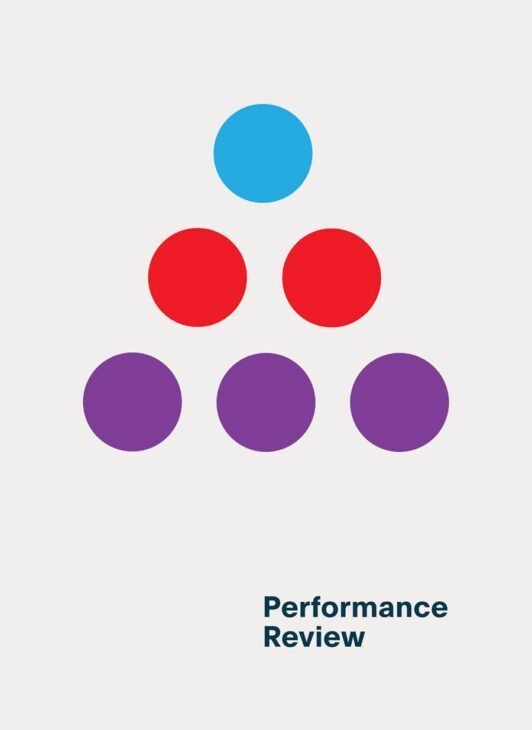Survey Hacks: A Cheat Sheet for Effective Online Surveys

Survey hacks can transform the way you collect feedback online. There’s so much to online feedback, but one of the most common questions we’re asked is how to design the perfect survey.
To help out, we created this list of simple yet effective hacks for optimizing any kind of survey. Whether it’s satisfying your customers or evaluating your employees do these 11 things and your surveys will bring results!
Know Why You’re Doing The Survey
One of the most crucial survey hacks is to know why you’re conducting the survey in the first place. The clearer your purpose, the better your results will be.
We can’t emphasize this enough. Before launching a survey, take the time to clearly define its purpose. Ask yourself
- Why are you conducting the survey?
- What should be the scope of the survey?
- Who do you want to respond to the survey?
If you are able to answer these three questions, you have established an ideal starting point for developing a good survey. Regardless of the type of survey you wish to conduct, it is essential to be crystal clear on the purpose of the survey and who you want to respond i.e. the target group, before you begin creating the questions.

Discover what truly motivates your employees so you can skyrocket your productivity and profitability.
Learn moreHow Many Questions Should I ask?
When considering this question, remember this fundamental survey hack: the better aligned the survey scope is with the respondent group, the higher the response rate and acceptance for longer surveys. It’s essential to inform respondents upfront about the expected time to complete the survey. If it’s estimated to take eight minutes, be transparent and state eight minutes, not four.
One Frequent Question Is Worth More than Ten Infrequent Ones
Another important guideline is that rather than creating long, extensive surveys, which you send out infrequently, you should aim for short, precise surveys that are sent out on a more frequent basis. It is tempting to add questions which are nice to have since you already have the respondent’s attention. Don’t! If you’re not concise, you run the risk of not receiving any answers at all.
Order Your Questions Carefully
To enhance the likelihood of respondents completing your survey and providing the information you seek, consider the sequence of questions carefully.
Begin your survey with a ‘warm-up’ phase, posing simple, straightforward questions to familiarize respondents with the survey format and put them at ease. Then progress to the more substantive and challenging questions, constituting the core of the survey. Finally, conclude with a ‘cool-off’ phase, gathering demographic data and additional comments.
By following these Survey hacks, you’ll prevent respondents from feeling pressured to tackle sensitive questions immediately upon starting the survey. Instead, they’ll experience a smooth entry and natural exit, maximizing engagement and data quality. These are essential survey hacks for optimizing respondent experience
Semantics are mightier than stats
It is a proven fact that semantics are often more important than statistics when it comes to market research. Statistics are obviously of vital importance, but one of the key foundations for all good research, can be found in the language.
It is really important that the questions you include in your survey fulfill certain criteria:
- The questions need to be relevant, to such an extent that they have an obvious connection with the overall purpose of the survey.
- The questions should be easily understood. Always consider the weakest link in the chain. There should be no room for misunderstanding or misinterpretation.
- The questions should be of interest for the majority of people in the target group – not just a select few.
- The questions should not be offensive, or provocative.
Okay, so now let’s look at how to create relevant, crystal clear, concise and neutral questions!
Never Ask Leading Questions
As far as possible, questions should be written in such a way that they appear to be neutral. Asking leading questions — that guide respondents to specific conclusions or certain answers is probably the most common error committed in market research.
Here are a couple of examples of questions that are obviously skewed:
“Don’t you agree that our new product meets all your needs and expectations?”
“Most people find our level of service to be excellent. Do you?”
Try Questback 14 days for free.
Always Ask Clearly
Identifying and avoiding ambiguous questions is essential in survey design. Ambiguity arises when questions can be interpreted differently by respondents due to generic wording or double meanings. This ambiguity can confuse respondents, leading to inaccurate or unreliable responses. Incorporating clear and precise language in survey questions is a key survey hack to ensure that respondents understand and accurately respond to each question.
Communicate Sensitively
It can be tempting to ”spice up” the questions you ask, but you should avoid phrasing that could result in stereotypical answers or that provoke the respondents. This may include words such as “radical”, “old fashion”, “progressive”, or “extremist”. Cliches and slang should also be avoided, in addition to any foreign words and abbreviations that may cause confusion.
Ask From A Position Of Non-Assumption
Respondents may not have knowledge or strong opinions about issues that do not affect them on a day to day basis. It is therefore important to make sure that you do not take things for granted when asking questions. Words and definitions may have different meanings for different individuals and groups. In addition, a questionnaire is not a test meant to reveal the extent of knowledge that the respondent has on a specific subject. Stick to the obvious facts!
Give Mutually Exclusive Choices
A common mistake is using categories that do not exclude each other.
For example:
”How old are you?”
- Below 20 years
- 20-30 years
- 30-40 years
- 40-50 years
- 50 years or older
In this case the respondent is asked to provide only one answer, and if the respondent is 30 years old, he or she can choose two of the offered alternatives.
Here’s an example on how to mutually exclude age categories:
”How old are you?”
- Below 20 years
- 20-29 years
- 30-39 years
- 40-49 years
- 50 years or older
Another element that may create confusion is if the scale does not have clear definitions, leaving it up to the respondent to define the border between the different alternatives:
“How often do you eat pizza?”
- Twice a week
- Sometimes
- On occasion
- Seldom
The alternative “Twice a week” is more clearly linked to a specific number, than the other alternatives.
Cover All The Alternatives
It is important to provide alternatives that cover all likely (and to some extent unlikely) responses to a given question. If there are not enough relevant alternatives, this will provide a potential source of error when interpreting the results. For example:
“Which of the following elements is the most important for you when choosing a petrol station?”
- Opening Hours
- Brand
- Price
This question is missing several alternatives, such as: “other”, “don’t know” etc. If respondents are not able to find any suitable answers among the alternatives given, they will not be able to provide reliable answers. If we had kept the first three categories and added a “don’t know” alternative, this would have provided formally exhaustive alternatives, but we might still not have included the most important element for the respondent: location. And “don’t know” may in this case either mean that the respondent doesn’t know enough in order to give a qualified answer or is not (due to the lack of alternatives) able to provide a decisive answer.
Another example of vague alternatives is when the question relates to money, time or other measurable units, but where there is no alternative for zero or “none”. In this case, some respondents may leave the question unanswered because they have nothing to report. But it might also be left unanswered if people don’t know or don’t want to answer the question. The quality of the results will be reduced if we don’t know how to interpret unanswered questions in a survey. These are essential survey hacks to ensure accurate responses and meaningful insights.
Join the conversation
If you’d like to comment or have questions on this article, visit us over on LinkedIn to join the conversation right now!
Read more about 360 feedback survey











